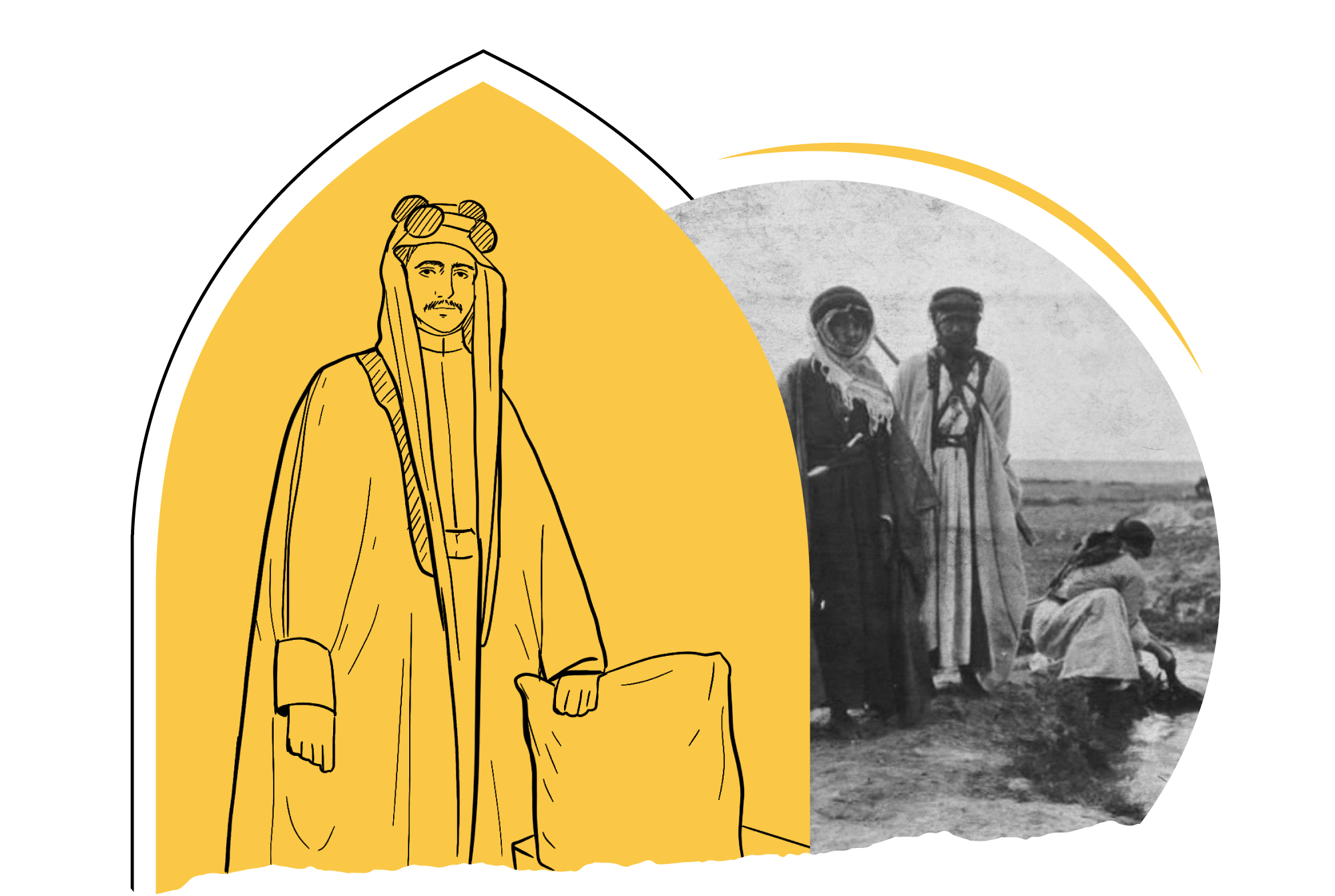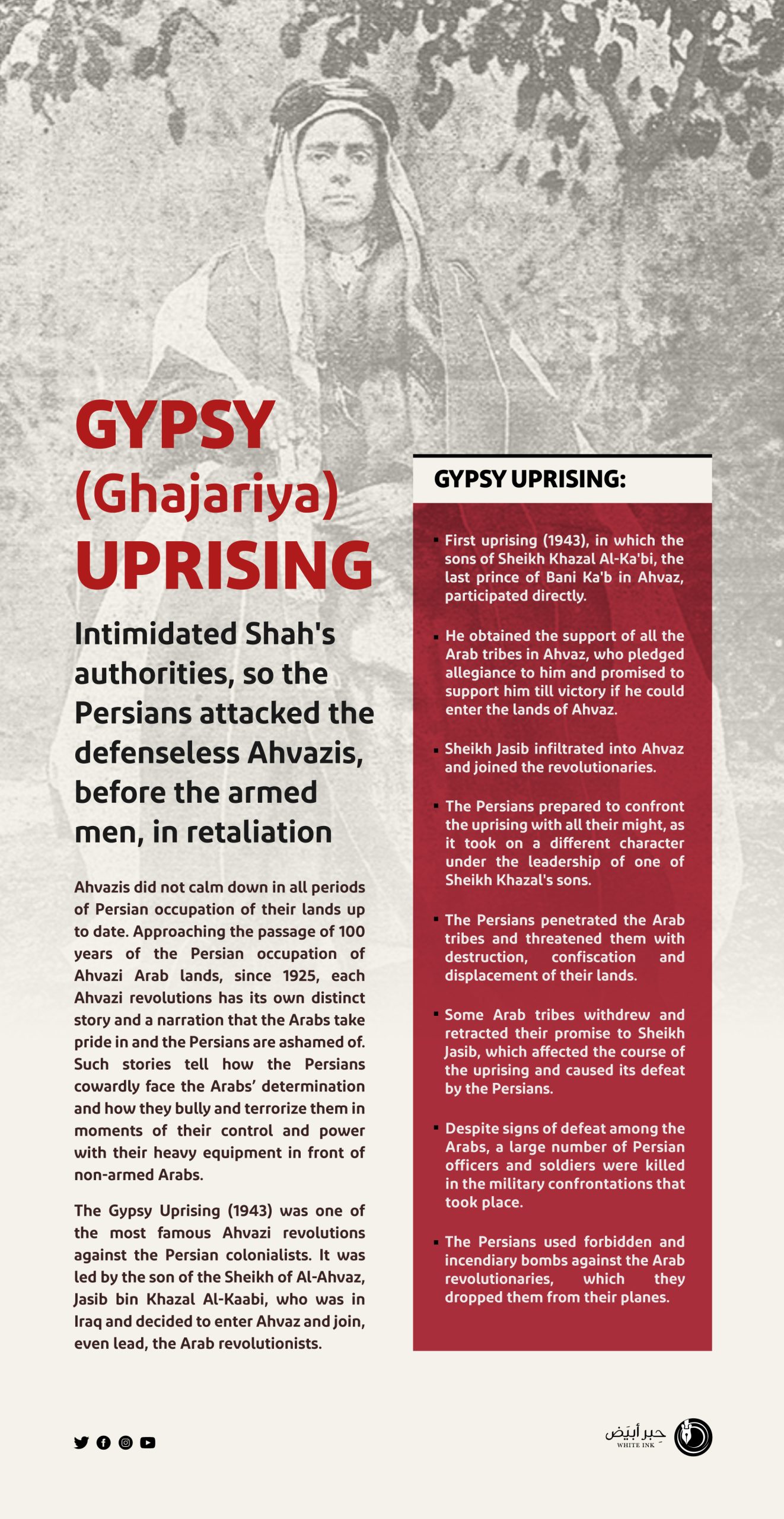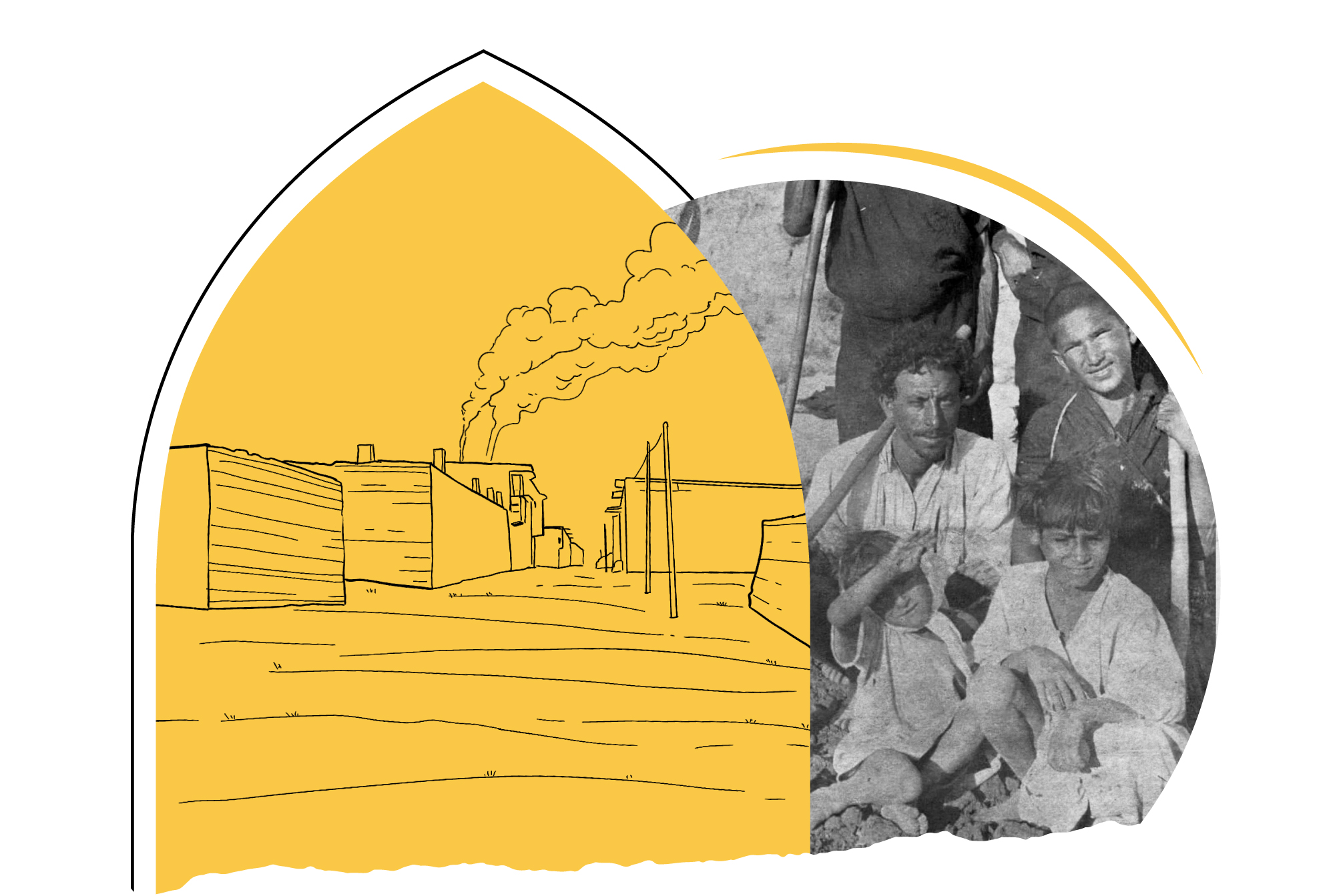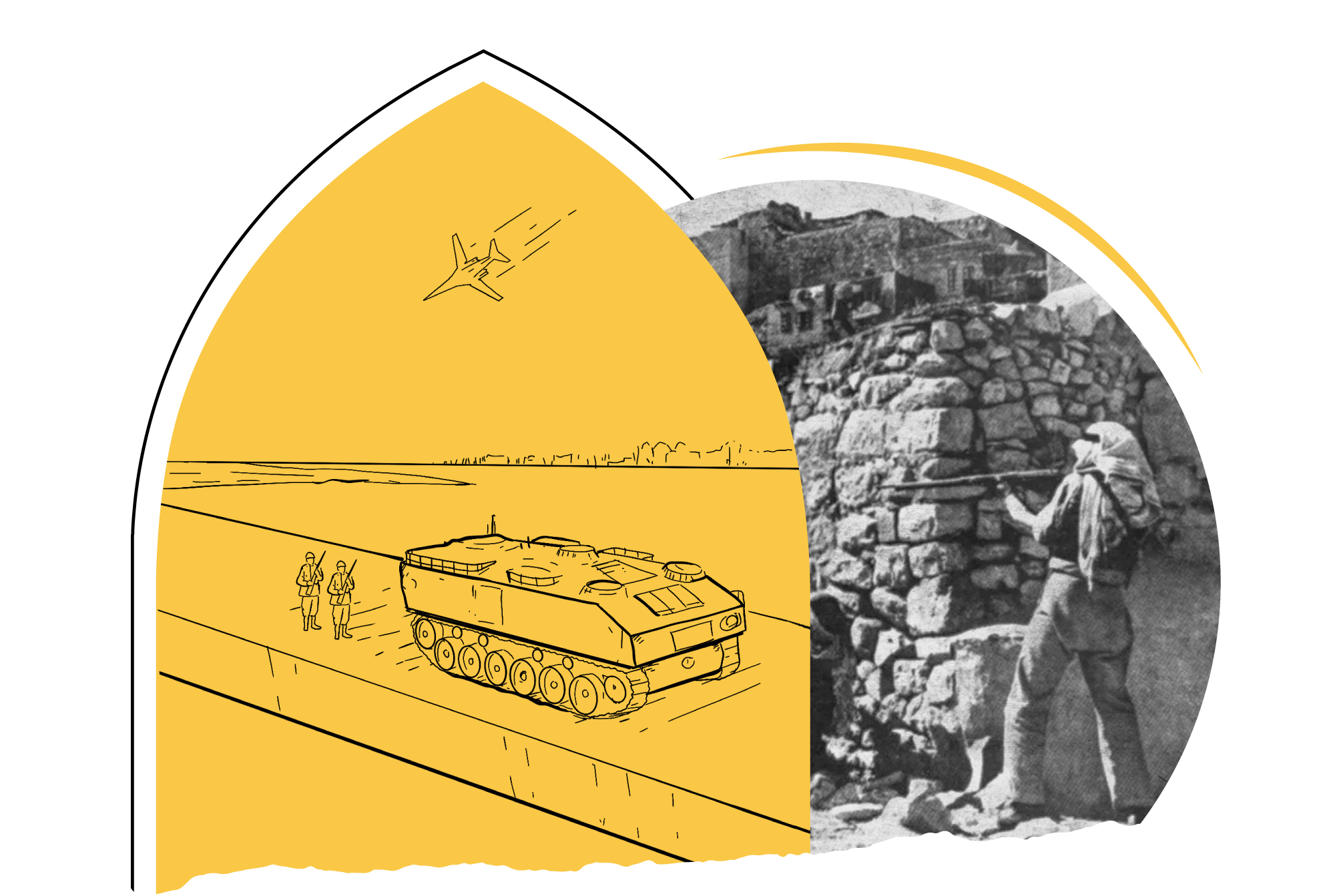
Gypsy (Ghajariya) Uprising (1943)
Had it not been for the withdrawal of some Arab tribes from the uprising, Sheikh Jasib bin Khazal was close to liberating Ahvaz
Arab Ahvazi did not fall from the sky, nor was it a single plant on the shores of the Arabian Gulf. Along with its Arab sisters on the other side, it represented an Arab extension known by geography and history for more than two thousand years. What is surprising when reviewing the history of Ahvaz is that it did not receive the recognition it deserves and political history did not pay attention thereto until only recently.
Getting to know about Ahvaz and its issues, we find that pure Arabs inhabited a region that became part of them as much as they became part of it. They discovered it and settled therein more than two thousand years ago, establishing a state with influence, authority and international relations for long periods. Had not they been subjected to two betrayals; the first was from the Ottoman Empire, which sold them to the Iranian Persians in the year (1847) following the Treaty of “Erzurum”, in which the Ottomans ceded Arabistan to the Persians, followed by a bloody revolution that lasted ten years until the year (1857), when the Iranian ruler announced his recognition of Arabistan as an independent state under the rule of sheikh “Jaber bin Mardaw”, so that Muhammarah and Arabistan would remain completely independent as of the year (1857), until the Iranian military occupation of it in the year (1925), and had it not been for the second betrayal of the British, the Arabs of Ahvaz would have remained until today an independent Arab state.
Portuguese historian and traveler Pedrotaskera, who visited Shatt al-Arab region in 1604, more than 400 years ago, says that the region east of the Shatt al-Arab is an Arab emirate, ruled by Sheikh Mubarak bin Abdul Latif, who was an independent ruler from the Iranian Persians and from the Turks. He even entered an international alliance with the Portuguese. Italian traveler Pietro della Vallai della also says that Ahvazi Sheikh Mansour was rejecting the intervention of the Iranian Shah Abbas I in his state. Such evidence from travelers over the past four centuries confirm the independence of the state of Arabistan from the occupying Iranian rule.
This revolution did not appear in Arab and international media and its precursors began after some Ahvazi tribes agreed with Sheikh Jasib bin Sheikh Khazal to carry out a comprehensive revolution that overthrew the Persian occupation and its colonial authority, expelling it from their Arab state, restoring the Arab Emirate of Ka’b and its previous independence and its days before the Persian occupation of Ahvaz in 1998. This confirms that the Ahvazis did not surrender to the occupier and their longing for freedom through their struggle, without fear of the death machine that the occupier’s authority imposed thereon in Tehran.
Sheikh Jasib began his revolution by entering with his people calling for liberation in the year (1943) and announced a comprehensive revolution with the support of the Arab tribes. However, he retreated in front of the huge invading Persian forces in terms of numbers and equipment, especially after some tribes broke their promises and did not support him, as the Iranian forces launched an armed military attack on the Ahvazi civilians, unarmed except for their bodies and a few white weapons and hunting rifles. The Iranian was not satisfied with that and used planes to bomb the civilians and abuse them, threatening everyone who engages in the revolution, not by killing him alone, but by killing his entire family and clan. It was a revolution against the occupation, but the occupier confronted them with the arrogance of military machines.
Iranians used planes to thwart Jasib's revolt, which faced the Persians with English hunting rifles.

This revolution was called the Ghajariya Uprising, after the name it was launched from. Among the participants in that uprising was leader Muhyiddin Al Nasser. At that time, he held a military position as head of the Arabistan Liberation Front.
However, that uprising has its results on the ground. Ahvazis exerted whatever precious they had in order to expel the Iranian occupier from their state. The Persians suffered heavy losses. Despite the primitive and few weapons of the revolutionaries, with old English hunting rifles, yet they were able to inflict losses on Persian authorities by killing a large number of Persian soldiers and officers, as well as downing a Persian warplane, which was one of the Iranian planes that were bombing the revolutionaries with internationally banned incendiary bombs.
Consequent to the difficulties that faced the Arab liberation revolution in Ahvaz, Ahvazis began to review the causes of failure and search for solutions, especially since their enemy possesses a destructive killing machine and does not consider account humanity or conscience when dealing with them. Perhaps the most important of these is the withdrawal of the Arab tribes from the revolution after they initially supported Sheikh Jasib. That withdrawal weakened the revolution and caused Ahvazi revolutionaries’ retreat before the Persian army. The reason for the withdrawal of those Arab tribes from the revolution is due to the direct Persian threat to destroy and crush them brutally, even erase them from existence. Thus, those clans preferred to keep the unjust situation in order to preserve the Ahvazi people and keep the land in the hands of the Ahvazis, limiting the expansion of land confiscation and settlement by the Persians, in addition to stop blood shedding. The clans saw that the revolution was not commensurate with the size of the Persian occupation forces and that their failure was inevitable.


- Samia Al-Jabri, Ahvaz Arabistan during Pahlavi Monarchy (Beirut: Jadawel for Publishing, Translation and Distribution, 2019).
- Ali Al-Helou, Ahvaz Revolutions and Organizations 1914-1966 AD (Najaf: Al-Ghari Modern Press, 1970).
- Ali Al-Helou, Ahvaz in Its Historical Roles (Baghdad: Dar Al-Basr, 1967).
- Musleh Muhammad, Persian Invasion of Ahvaz and the Arab Resistance After World War I (Anbar: College of Education, 2020).


After Suppression of Bani Tarf Uprising (1945)
Shah's Forces Forced them to Starve, Thirst and Die on Foot to Tehran
Iran benefited from the changes in the post-World War I world as Shah Reza Pahlavi colluded with Britain to swallow Ahvaz, overthrow its Arab ruler, Sheikh Khazal, and arrest him in the year (1925), exiling and killing him thereafter.
Since the Iranian occupation of Ahvaz, the unjust policies of the brutal Persian rule have not stopped, in return for which the Arabs of Ahvaz staged many uprisings against Tehran and its policy calling for the impoverishment of Ahvaz and the Persianization of land and population. Lebanese researcher, Aida Al-Ali Sari Al-Din, provides an explanation for the Iranian racist policy: “With regard to national facts, it is known that Persian hostility to nationalities is a comprehensive movement that does not concern Arabistan alone. The focus of that hostility in Arabistan was born as a reaction of the Persians to the Arab leadership in the Islamic era”. This is how the researcher sees the Persian racial policy towards non-Persian nationalities in Iran, with Persianization policy focusing on the Ahvazi Arabs, as a result of the Persians historical complex towards the supremacy of the Arab rule of Persia in Islamic era.
It was natural for Ahvazi Arabs to rise up in successive uprisings against these racist Persian policies. Perhaps the most important of these uprisings was that of Bani Tarf, especially the second Bani Tarf uprising that took place in 1945. The spark of this uprising extended to include many famous Arab tribes in Ahvaz, such as Bani Sala, Bani Lam, Al-Shorfa and Al-Muhaisen. This uprising is attributed to Bani Tarf, and they are from the original Arab tribes that migrated to live in Ahzaz hundreds of years ago, where they settled in the region. Bani Tarf were known for their originality and dissatisfaction with humiliation.
The circumstances of this uprising were linked to the local, regional and global variables at the end of World War II, as well as Tehran’s constant desire to impose Persian centralism on non-Persian regions, especially Arab Ahvaz. However, the direct reason was the Persians’ attempt to impose a change in Arab fashion, as well as the disarmament of these tribes. It is well known how Arabs are closely liked to their uniform and weapons.
The second Bani Tarf uprising broke out in (1945), when Ahvazi Arabs, who had nothing but light weapons, faced the legions of the Persian army, equipped with heavy weapons. At the beginning of the uprising, the Arab tribes were superior over the Persian forces and succeeded in imposing their control over many Persian cities, villages, police stations and military fortifications. That uprising continued for several months, during which Persian iron fist was weakened before Arab tribes.
Tehran was worried of the success of the revolution in Ahvaz, fearing that the winds of the revolution may move to many other regions in Iran. Accordingly, the Persian war machine prepared its equipment and sent military mobilizations to Ahvaz, reinforced with armored vehicles. They even used military combat aircraft to suppress that uprising. The task of the Persian army was not an easy matter due to the valor of the Arab tribes in defending their identity, in addition to benefiting from the geographical nature of Ahvaz; with the abundance of rivers, swamps and palm groves that constitute a natural barrier that prevents the rapid advancement of Persian military vehicles.
In the face of that resistance on the side of Arab tribesmen, the Persian war machine resorted to a scorched earth policy. Hence, Persian forces bombed villages, cities and gatherings of Arab clans, destroyed homes and burned crops, in a major massacre that Ahvaz had not witnessed before. Although they used military aviation in that terrorist act, Arab tribes withstood for a while, and there are local historical accounts that speak of the success of the fighters of the Arab clans in shooting down a Persian plane with their light weapons.
In the face of that resistance, the Persian war machine intensified its military power and was able to suppress that uprising. Persian racism was not content with suppression, but attempted to humiliate Ahvazi Arabs and break their resolve. Persian forces resorted again to the policy of forced displacement and deported about 150 Ahvazi Arabs to Tehran in a miserable manner by forcing them to walk to Tehran on foot. Most of them were from Bani Tarf, including many women, children and elderly people. Only 40 of them arrived in Tehran as the others died from hunger, disease and harsh climate. Some collected some historical testimonies from those who survived, where they talked about what they witnessed with their own eyes from the tragedy of walking to Tehran: “He who could not walk was crushed by the armored cars of the Iranian army or left in the open to feed the wild beasts or die of hunger and thirst”.
Iranian vehicles ran over children, women and the elderly from Bani Tarf Arabs.

Ali Nema Al-Helou summarizes the aim of the Persian authorities in committing all kinds of war crimes during the suppression of the second Bani Tarf uprising, saying: “That incident was a tragedy that people did not know, committed by Iran against the Arabs of the region with all cruelty and hatred, with a view to instill terror in their souls and stone their feelings, so that no person would demands his right and freedom, or he would face the fate of the martyrs of Bani Tarf”.


- Amer Al-Dulaimi, Iranian Occupation of the Arab Region of Ahvaz (Amman: Academicians Publishing House, 2020).
- Aida Al-Ali, Ahvaz, Arabistan, an Emirate in Oblivion (Beirut: Bissan for Publishing and Distribution, 2016).
- Ali Al-Helou, Ahvaz Revolutions and Organizations 1914-1966 AD (Najaf: Al-Ghari Modern Press, 1970).
- The Iraqi Ministry of Information, History of Arabistan and the Current Situation in Iran (Baghdad: Ministry of Information Press, 1971).

Mazkhor al-Kaabi Revolt (1946)
One of the Severest Ahvazi Reactions that Inflicted Heavy Losses on the Persians
Understanding and assimilating the historical material constitute the first building blocks for building a collective Arab awareness capable of crystallizing a smart strategy that enables realizing Ahvazi Arabs’ dream of liberation from the yoke of Persian colonialism and s rearranging the balance of power in the region favor the Arab Gulf and the entire world.
The method of extortion through the scarecrow of Iran no longer serves either the West or the East. That regime has become an abnormal political situation, internally and externally, which calls for intervention to put an end to Iran as a threat to international peace and security (Article (7) of the UN Charter).
Ahvazi Arabs understood the arrogant nature of the Persians, refused to submit to the fait accompli policy, and declared one uprising after another, although these uprisings or cases of disobedience maintained the nature of reaction rather than initial action.
In this context, Sheikh Mazkhor Al-Kaabi rose up in 1946, yet his revolution was similar to its predecessors; i.e., a reverse reaction to “the massacres that were committed against Saadet Partisi Party (Felicity Party) and extended to all Arabs”. This uprising, which took the coast of the Shatt al-Arab as the headquarters of Sheikh Mazkhor tribe, was able to inflict significant defeats on the Persian garrisons and take revenge to the Arabs “whose blood was stained by the hands of the communists”.
We can deduce from the very first moment that intersection between the revolution of Sheikh Mazkhor Al-Kaabi and “Thawrat al-Ghilman”, where the reaction and victory for one of the Arab symbols were the preludes to the uprising against the Persian occupier, away from the crystallization of a collective revolutionary awareness according to the ground and references that we framed in previous articles. Despite the firmness of mind and pragmatism in any revolutionary act that leads to liberation from external colonialism, yet the manner in which the Persians dealt with the leader of the Felicity Party, Hajj Haddad and his followers, as well as the Persians’ diligence in mutilating the corpses of party members, burning some of them, and beheading the Arabs, created a state of congestion. Thus, the human reaction was aggravated by rejection of the occupation and the Persian ethnic policy, so as to create a state of violent rejection led by Sheikh Mathour Al-Kaabi.
Although the uprising created a state of confusion in the ranks of the Persian occupier, the latter, as was always the case, returned to consolidate its ranks and direct “a strong army, reinforced with modern weapons and armored vehicles, in addition to the use of air force, where Sheikh Mazkhour and his tribe members were bombed, prompting Sheikh Mazkhour to flee to Iraq”.
The method of passive resistance (reactions) cannot create a radical change in an environment that lives on the impact of conflict and between two parties that do not have the same tools and means. Therefore, the balance always tilts in favor of the Persian occupier, who responded to Sheikh Mazkhour’s uprising with several massacres that intended to assassinate the soul of initiative and discourage Ahvazi Arabs against even thinking of revolting against the Persian occupation.
Perhaps the massacres committed by the Persians against the Arabs is derived from the dictionaries of Nicola Machiavelli, who emphasizes the idea that “when it comes to attacking, then attack must be carried out in a way that makes the opponent refrain from even thinking of revenge”. Therefore, the fundamental reason for the failure of the uprising of Sheikh Mazkhor al-Kaabi, and its predecessors, lies in the absence of coordination with the other opposition forces, “although those forces were based, in their movement, on tangible Arab weight that and they had an active role in the struggle against government authorities and Anglo-Iranian oil corporations. Hence, it was easy for the responsible authorities to intervene forcefully to thwart those movements, especially since they (the authorities) were free to act in Ahvaz and were often supported by the British”.
The advanced and heavy military machine is what has always saved the Persian occupier on the land of Ahvaz.

What exacerbated the plight of Ahvazi Arabs was the state of alliance between Iran and Britain, which, in turn, contributed to tightening the screws on the Arabs, thus placing them between the “jaws of pincers”, facilitating the process of suppressing all uprisings that were eager for liberation from Persian colonialism.
Perhaps the changing facts on the field, the presence of a strong Arab depth and the accumulation of political and media momentum around Ahvazi issue, might have changed the facts on the ground, especially since this issue took on geostrategic dimensions. The justice of the issue was combined with the rearrangement of the situation in the region, to the extent that it can be said that the end of Persian colonialism in the Ahvaz region means the end of the state of Iranian control over areas of the Arabian Gulf, thus eliminating one of the most serious threats to Gulf national security.


- Amer Al-Dulaimi, Iranian Occupation of Ahvaz Arab Region, (Amman: Academicians Publishing House, 2020).
- Ali Al-Helou, . Revolutions and Organizations 1914-1966 AD (Najaf: Al-Ghari Modern Press, 1970).
- Ali Al-Sarkhi, History of the National Movement in Ahvaz, (Master’s Thesis, University of Baghdad (2002).
- The Iraqi Ministry of Information, History of Arabistan and the Current Situation in Iran (Baghdad, Ministry of Information Press, 1971).





